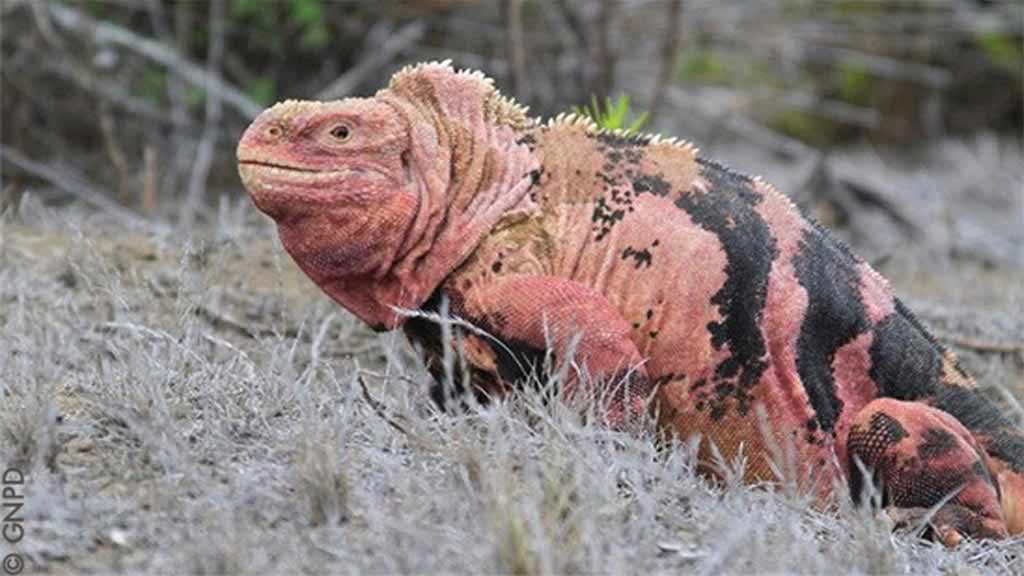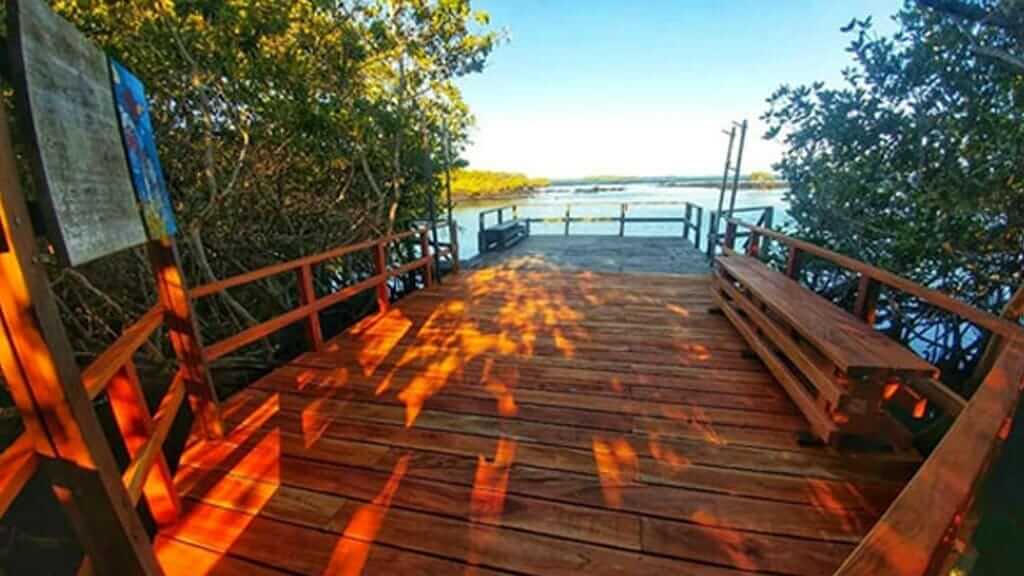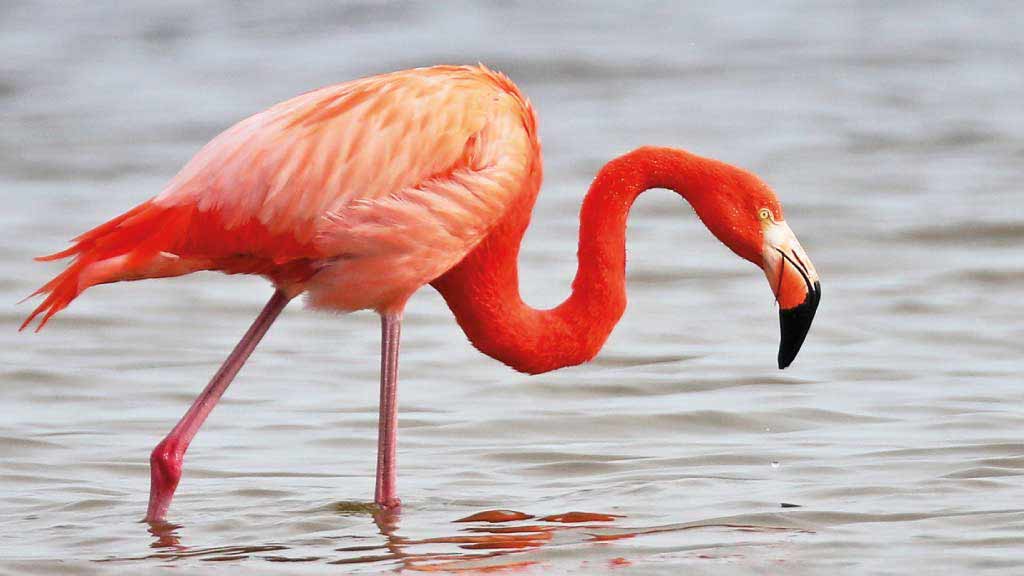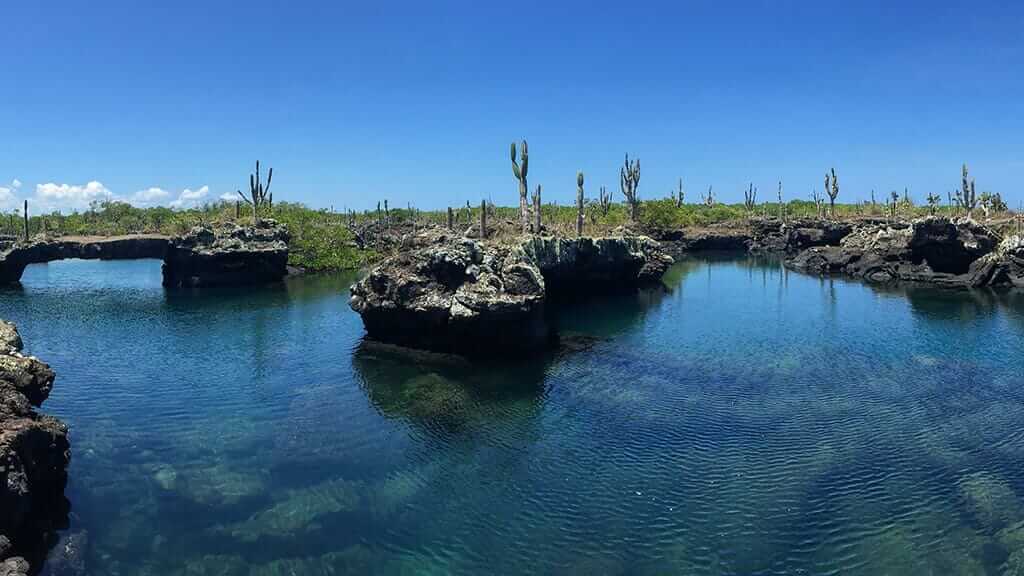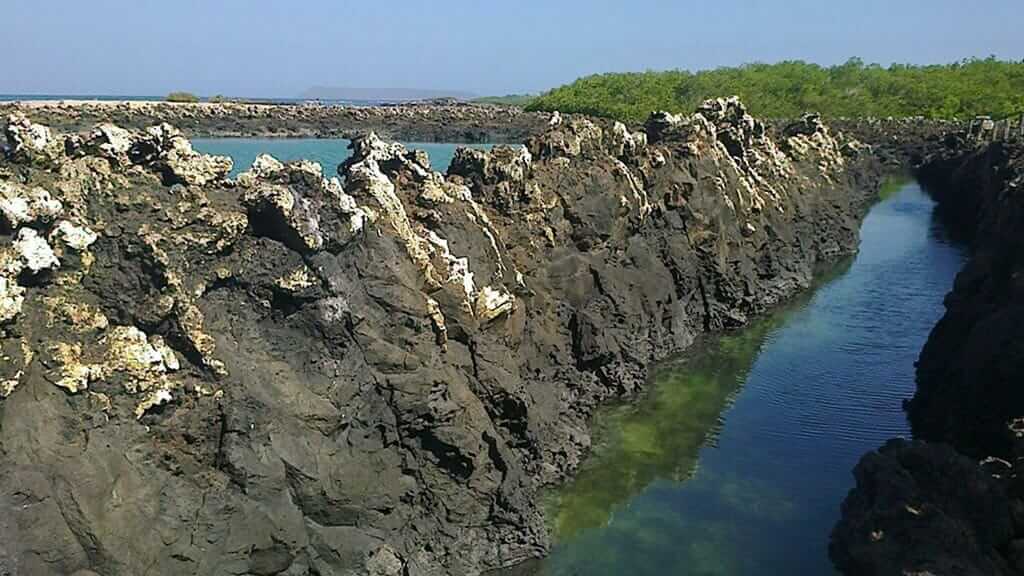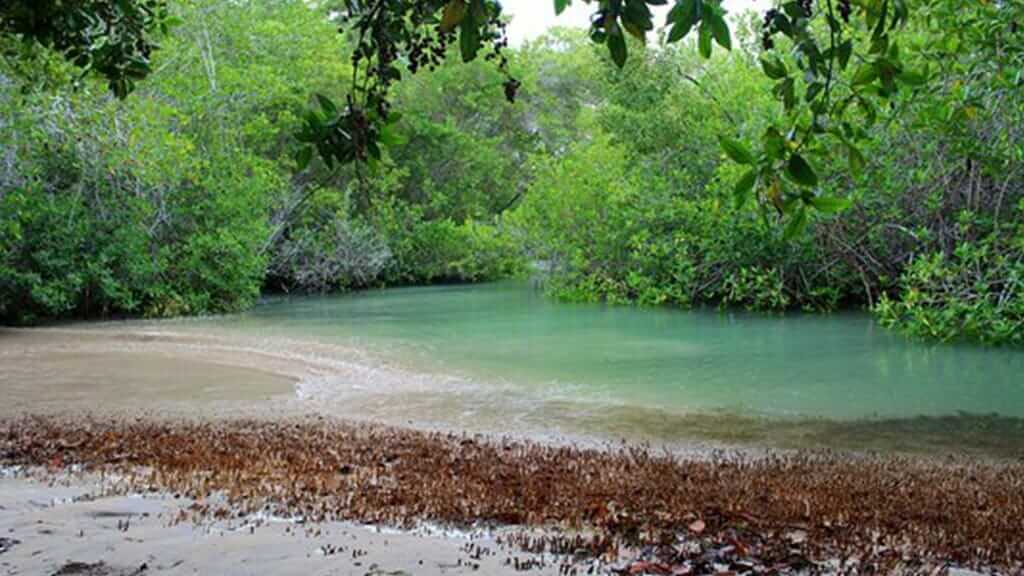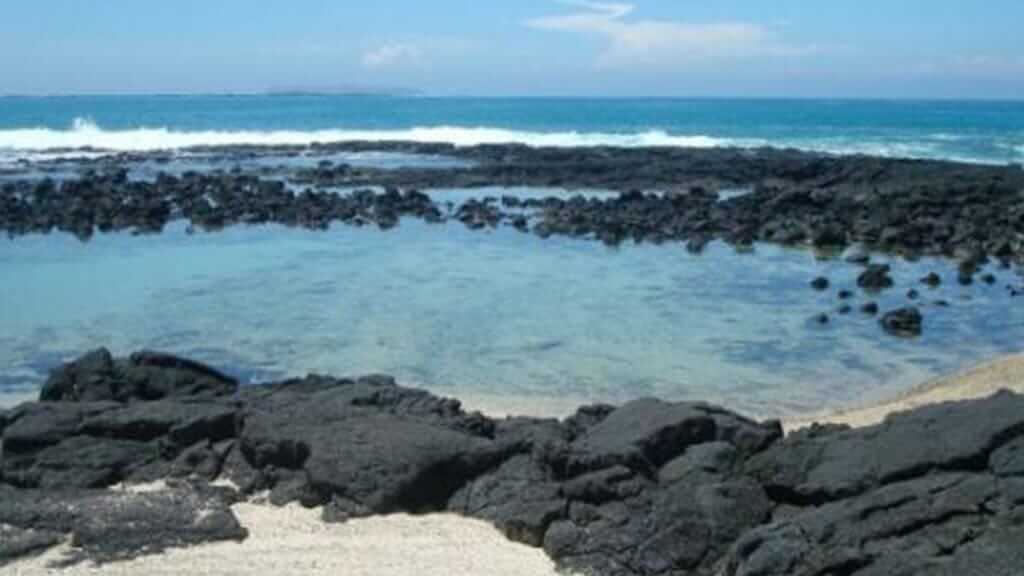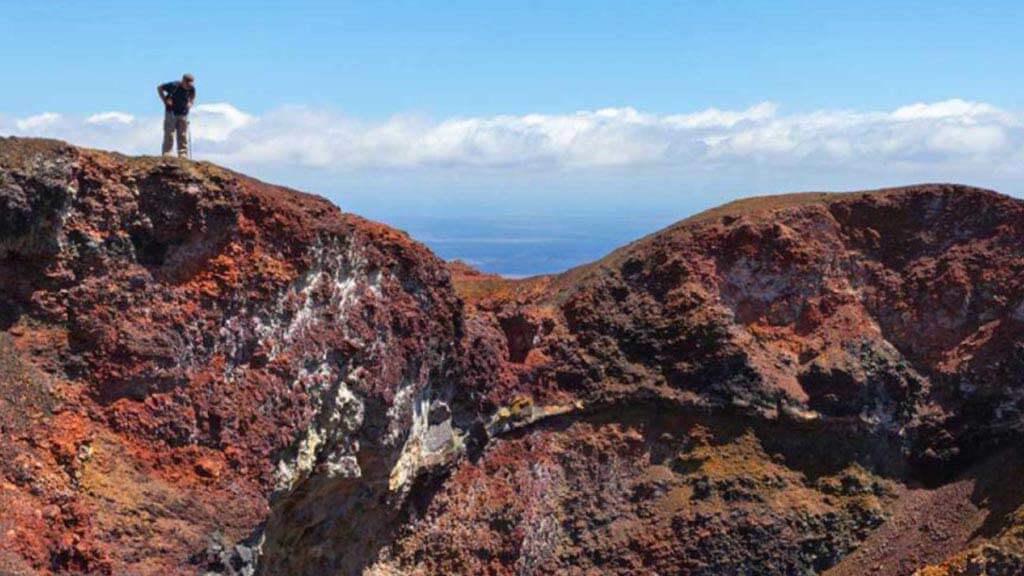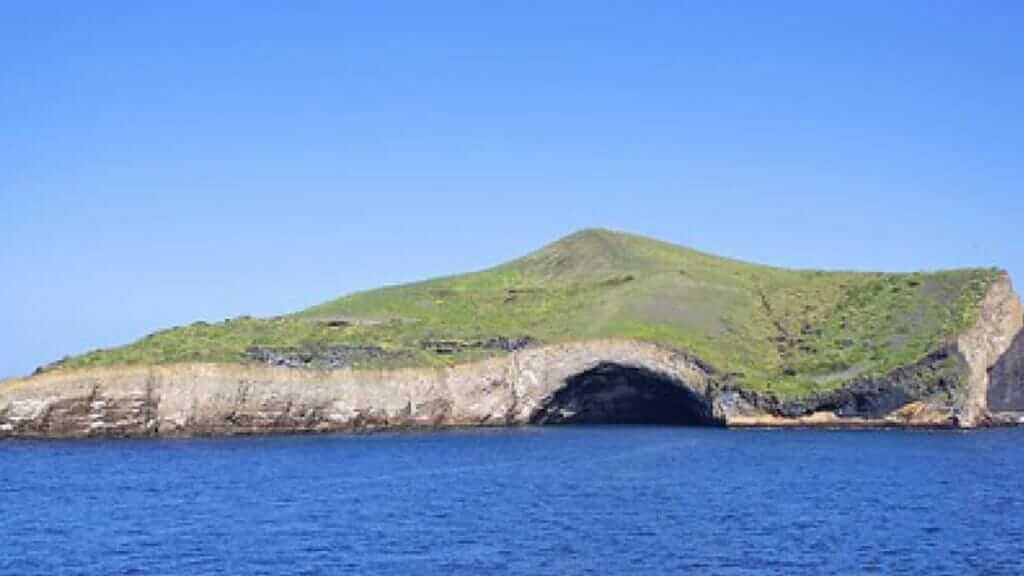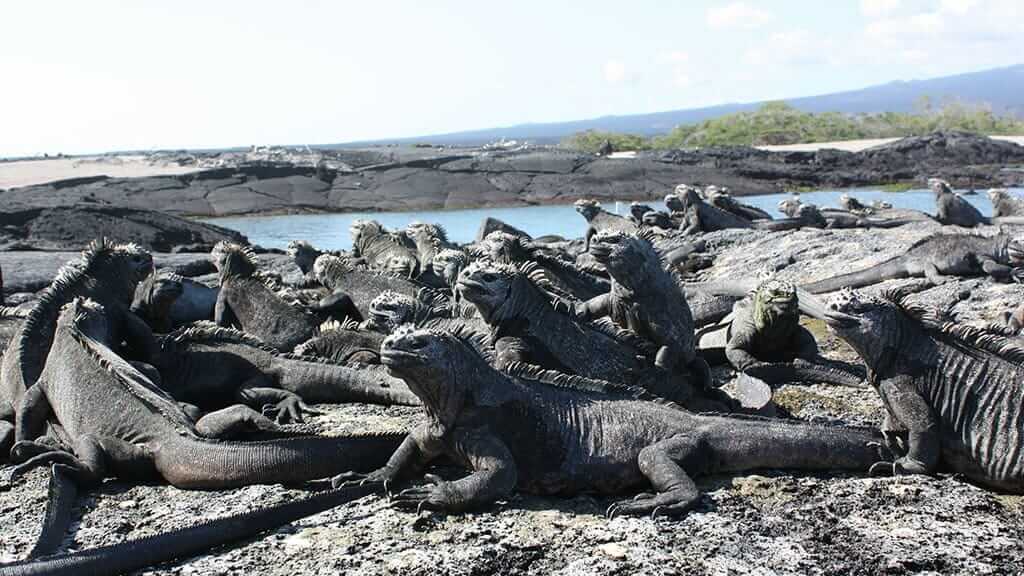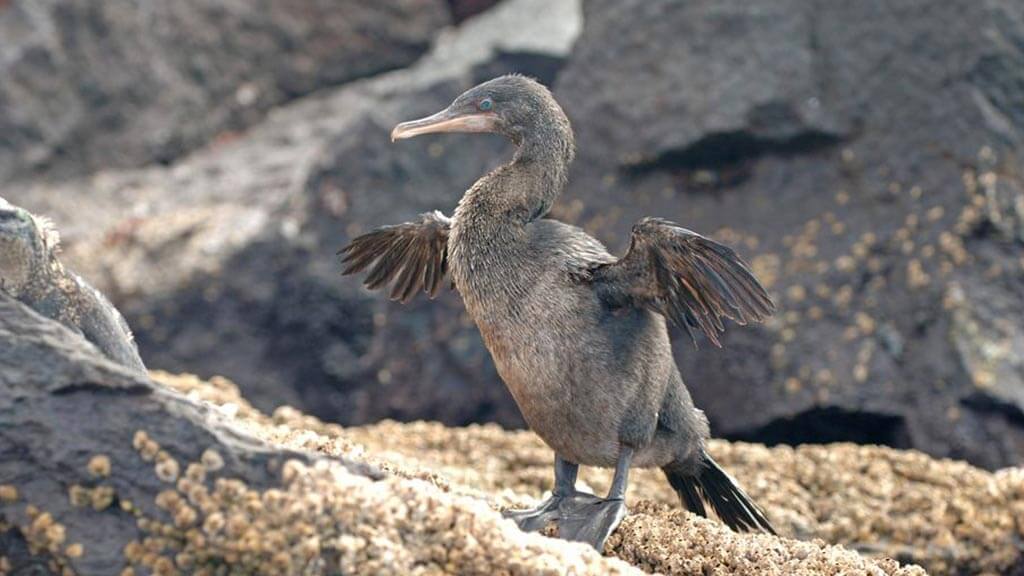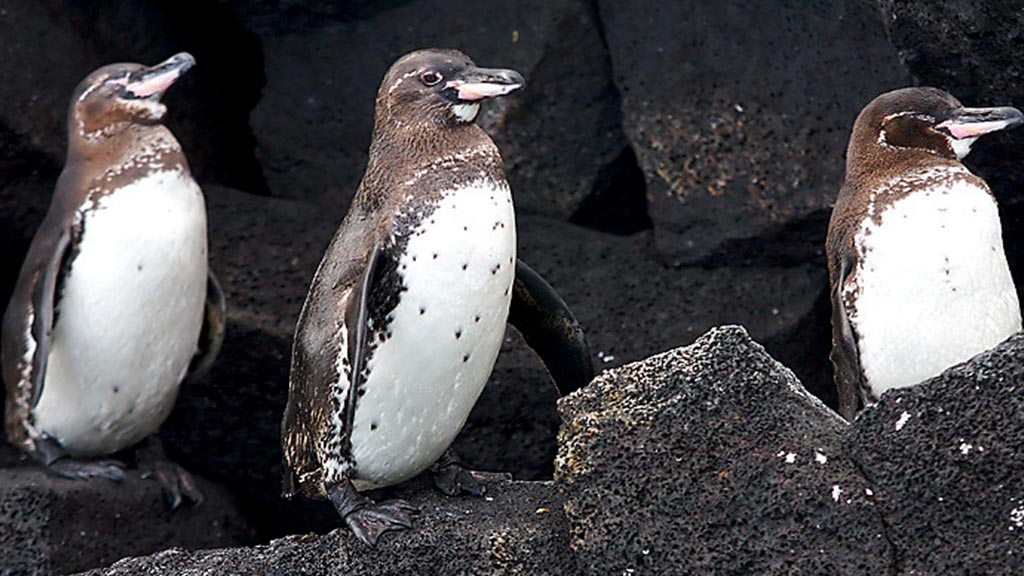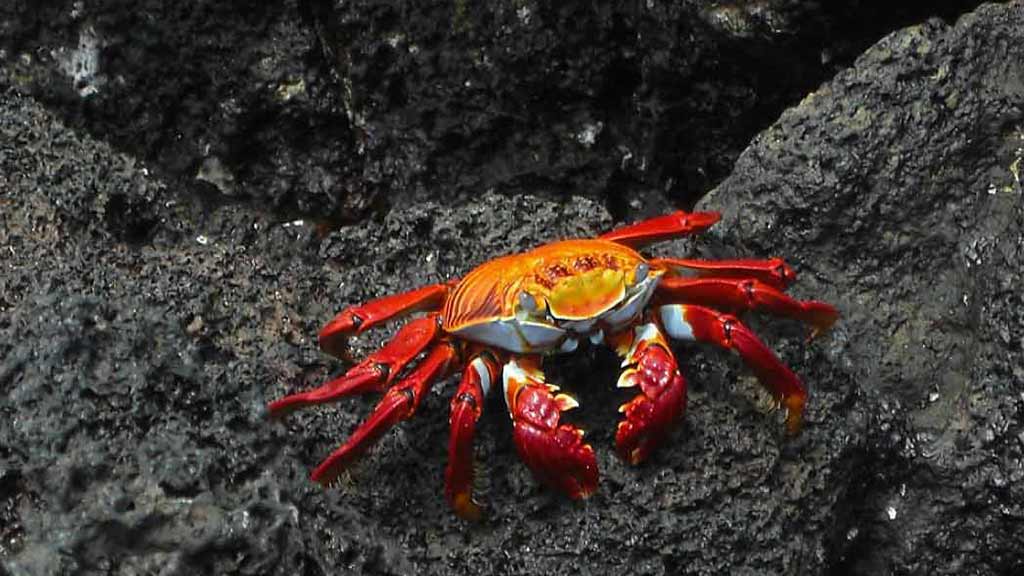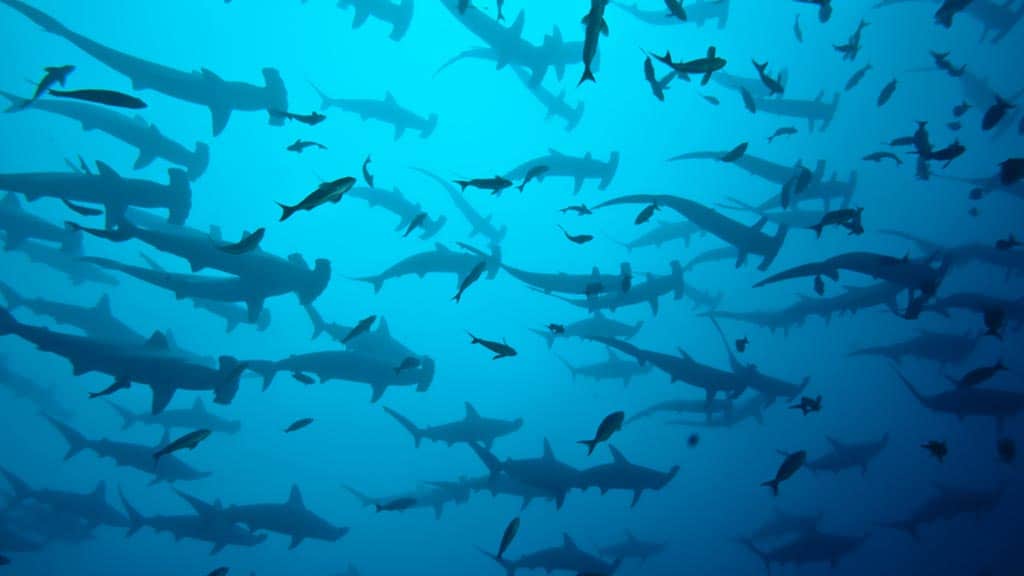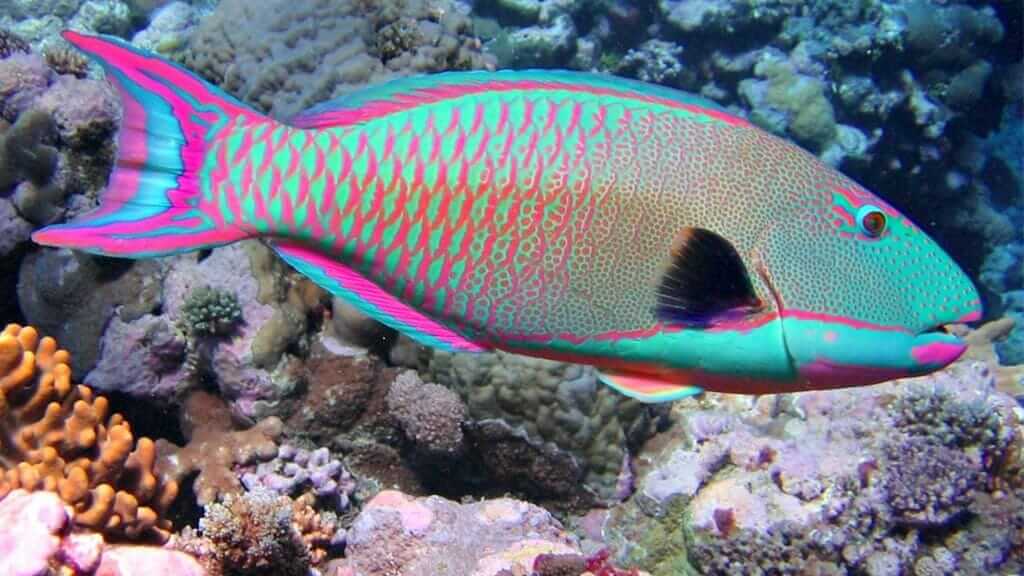Isabela Island Galapagos
Isabela Island is the largest land mass in the Galapagos and one of the most spectacular islands to visit. What is special about Isabela Island? The combination of diverse wildlife and spectacular volcanic landscapes is certainly hard to beat. There’s also top snorkeling, trekking, and dive action to enjoy. Isabela’s Puerto Villamil is a sleepy town with a gorgeous beach, making it a top spot to hang out and relax. Isabela Island Galapagos also offers flexibility for visitors – visit on a cruise, land tour, or simply under your own steam. We highly recommend that all Galapagos visitors make some time for Isabela Island in your itinerary.
Keep reading for everything you need to know to plan your visit to Isabela Island Galapagos. What wildlife to expect? What are the best activities and visitor sites that await? Also, let's learn about the interesting geology & history of this island.
SECURE YOUR GALAPAGOS TRAVEL
Get a FREE personalised quote todayThe Best Isabela Island Animals to Look Out For
• More Galapagos Penguins live on Isabela Island than anywhere else on the Galapagos Archipelago, making it the top spot to see them.
• Five different species of Giant Tortoise call Isabela Island home. Visitors can learn all about them at the Arnaldo Tupiza Tortoise Breeding Center.
• Isabela Island is one of just two Galapagos islands where the endemic Flightless Cormorant nests. Through complex evolution, these fascinating birds have incredibly lost the ability to fly.
• Isabela Galapagos is also a great place to spot Marine iguanas, with large colonies at various different visitor sites.
• Snorkel with whitetip reef sharks and Sea horses at Los Tuneles on Isabela Island.
• Isabela is home to a huge diversity of Galapagos land birds. Avid birders should look out for Galapagos finches (including the critically endangered Mangrove Finch), Flamingos, Galapagos doves, pintail ducks, various waders & shore birds, Galapagos hawks, and much more.
• Colonies of both Galapagos Fur seals and Sea lions can be found on Isabela’s west coast. See if you can tell the difference between these two cute mammal species.
• Isabela island also has most of the usual Galapagos seabird suspects: Blue-footed boobies, Frigate birds, Pelicans, Storm petrels, Red-billed Tropicbirds, Shearwaters, Herons, and more besides.
• There is also one very unusual Isabela Island resident – the pink iguana. This is the only place on the planet where they live, on the pristine slopes of Wolf Volcano. Although there is no visitor access to this site, they are a very important recent discovery to natural science.
About Isabela Island Galapagos
English Name: Albermarle.
Ecuadorian Name: Isabela.
Total Area: 1771 sq miles.
Population: Aprox 2,200
Take a look at a Galapagos Islands map and Isabela island is the large landmass to the west, shaped like a sea horse.
The small town of Puerto Villamil is located on the southeast coast and is a lovely spot to spend a few free days given the opportunity. The locals here are friendly, the vibe laid back, and there are heaps of activities to keep visitors happy.
Isabela Island’s west coast visitor sites can only be reached aboard a Galapagos cruise yacht. They are highly rewarding for their pristine nature and to cross paths with some Galapagos endemic species. The Bolivar Channel is the top spot for Galapagos whale watching, especially from June onwards.
Isabela Island Geology
Isabela Island is both the youngest and largest island in the archipelago. Located in the western waters of the Galapagos, Isabela measures 120km in length, with a total area of 1771 square miles - bigger than all of the other islands combined.
The island was formed by the merging of six individual shield volcanoes – Alcedo, Cerro Azul, Darwin, Ecuador, Sierra Negra, and Wolf volcanoes. Each volcano emerged independently from beneath the ocean. After repeated eruptions, their lava flows merged to form the island we find today.
Isabela Island is very close to the Galapagos hotspot, meaning that all of these volcanoes are still volcanically active. In fact, Isabela Island is one of the most volcanically active areas on the planet!
Isabela Island Habitat
Isabela Island spans a huge spectrum of different natural Galapagos habitats.
Extensive volcanic lava fields are largely void of vegetation. Perhaps a few pioneer plants like lava cacti fight to establish a home here, but larger plants are unable to colonize this barren landscape without soil. Due to the volcanic nature of Isabela island, the habitats are in a state of constant flux. Just one new eruption can quickly change everything.
The highlands to the south around Sierra Negra volcano are covered by lush Scalesia forest and dense brush and scrub – the perfect habitat for the Galapagos giant tortoise. Some of this habitat has been converted to organic farmland to feed the local population, while the rest is protected for wildlife.
The peaks of Cerro Azul and Wolf volcanoes are more arid with smaller shrubs.
Lower down on the southern coast the Isabela habitat turns to coral beaches, mangroves, cactus forests, arid scrub, and wetlands.
The Bolivar Channel to the west coast of Isabela Island has colder water than other areas of the archipelago. The rich nutrients here caused by the upwelling of the Cromwell current attract various species of whale and dolphin.
The Human History of Isabela Island Galapagos
Isabela Galapagos is not just about wildlife and volcanos, there’s also a story of human history to be told.
Let’s start with the origin of the island names. Back in 1684 Ambrose Cowley mapped the Galapagos archipelago, and named the largest island Albermarle, after the 1st English Duke of Albermarle. The duke at that time was George Monck, who had been an important soldier and politician during the English Civil War and the restoration of the English monarchy. Ecuador later changed the title to Isabela, in honor of Queen Isabella I of Castile, the first queen to reign over the united kingdom of Spain.
The first visitors to Isabela Island were pirates and whalers. They would use the Galapagos islands to restock food and water or to hide away from chasing Spanish ships. Tagus Cove Isabela was a popular landing site for them to round up giant tortoises for meat supplies.
In 1897 Isabela’s first settlement was established by Ecuadorian Antonio Gil. Puerto Villamil town was set up on the coast as a lime house, where coral was collected and burned. The small settlement of Santa Tomas was also formed up in the highlands, where sulfur was mined, coffee was planted, and livestock was allowed to roam free. Gil also hunted giant tortoises for oil used to power Ecuadorian street lamps. By all accounts Gil’s settlement was successful. Isabela Island’s Galapagos population slowly increased from 200 people in the early 1900s up to a little over 2000 today. Many of the graves of these intrepid early settlers can be seen in the small Puerto Villamil cemetery.
In 1946 a penal colony was also established on Isabela Island. 300 mainland convicts were shipped out and forced to labor under the hot equatorial sun. Tourists can witness the fruits of their toil at appropriately named the Wall of Tears – a pointless wall in the middle of nowhere constructed out of black lava rocks.
The 21st century has seen Isabela develop more modern infrastructure to attract international tourists, such as the small Puerto Villamil airport to receive intra-island flights. Today most of the 2,200 Isabela residents make a living from tourism, fishing and farming.
Isabela Island Galapagos Giant Tortoises
Isabela Island is home to more wild giant tortoises than all the other Galapagos islands combined. Not only that but here you’ll also find more giant tortoise subspecies than anywhere else! So for tortoise lovers, Isabela Island is THE place to come to learn more about these iconic gentle giants.
Most of the 15 Galapagos tortoise species are differentiated between different islands. For example, separate species are native to Española, Fernandina, Floreana, Pinta, Pinzon, San Cristobal, Santa Cruz, Santa Fe, and Santiago islands. This is logical as explained by Darwin’s theory of evolution – different subspecies have evolved from the same common ancestor based on the different habitats and food sources found on each island.
So, why does Isabela Island have five unique giant tortoise species? The story behind Isabela’s distinct tortoise populations is interesting. Remember that Isabela Island was formed by the merging of six shield volcanoes. So Isabela’s topography has 6 tall volcanic peaks separated by vast lava fields. Solid lava tends to be spikey and sharp – an impenetrable obstacle for the agility of your average tortoise. So the Isabela tortoises around each volcano became isolated from the other Isabela populations, unable to cross the lava fields that divide them. Evolution wise this had the same effect as populations separated by the sea on different islands. Each Isabela volcano population adapted differently to its distinct habitat on Isabela Island, hence different subspecies evolved.
So Isabela is home to five species of Galapagos tortoise: Wolf, Darwin, Alcedo, Cerro Azul, and Sierra Negra populations. Four of these volcanoes are off-limits to tourists so the easiest way to see an Isabela tortoise in the wild is to visit the highland ranch on the slopes of Sierra Negra volcano. We also recommend a visit to the Arnoldo Tupiza Breeding Center, where giant tortoises from the southern populations are bred in captivity and released in order to protect these endangered species.
Where is Isabela Island Galapagos?
How to get to Isabela Island Galapagos?
Puerto Villamil and the visitor sites on Isabela’s southeast coast can easily be included in a Galapagos Land Tour itinerary. The west coast though is too far away for day trips so you’ll need to take a Galapagos cruise to get there. Yachts that do include west Isabela usually also visit Fernandina, which is a hugely rewarding and recommended Galapagos itinerary.
Contact us for a FREE GALAPAGOS TOUR QUOTE, or for more information to plan your Galapagos vacation.
Puerto Villamil Isabela Island
Puerto Villamil, the capital of Isabela Island, is a sleepy port town where travelers find refuge from the hustle and bustle of everyday life. Located behind a stunning beach, the small, peaceful town has an assortment of bars, restaurants, and shops. It is the launching site for day tours around the island to amazing snorkeling sites, islets where penguins play and white-tipped sharks rest, and excursions to neighboring islands.
Services in Puerto Villamil include a medical clinic, pharmacy, grocery store, and convenience mart. There is no bank, but there is an ATM service, credit cards are not always accepted, so travel prepared with US$ cash.
Take advantage of the slow internet service on Isabela Island to disconnect from life for a few days.
Check out our detailed blog post about how to spend a free day in Puerto Villamil, for more information about the best Isabela island restaurants, services and sites to visit.
Isabela Island Visitor Sites
Isabela is the largest Galapagos island, so it goes without saying that there is plenty to do and see here. Kayaking, snorkeling, hiking, biking, surfing, and relaxing on tropical beaches are just some of the activities that reveal the natural wonders of Isabela Island.
VISITOR SITES FOR LAND TOURS:
Puerto Villamil Beach
The long stretch of gorgeous sand in front of Puerto Villamil town is considered one of the finest Galapagos beaches. Located on the bay, it’s an ideal spot to swim, surf, relax or have a sundowner at beachfront bars in a hammock after a day of active exploring. Marine iguanas, Sally lightfoot crabs and blue footed boobies join you on the pristine sand.
Concha de Perla
Concha de Perla is a clear water bay with calm, crystalline waters, and a small yellow sand beach. Rent out snorkel gear in town, and jump right in for swimming and snorkeling alongside tropical Galapagos fish, playful sea lions, and, with luck, perhaps penguins. No tour guide is required here.
Flamingo Pool
Located just a short way out of the main town to the west is a man-made lagoon of brackish water. The largest Galapagos flamingo colony hangs out here, sifting the water for crustaceans. Sometimes Galapagos duck species or wading birds can also be spotted.
Los Tuneles Isabela
Los Tuneles at Isabela Island is one of the very best snorkel and dive sites on the Galapagos islands! It is a sheltered maze of pools and lava bridges formed when lava flowed from a nearby volcanic eruption into the sea. The waters are crystal clear, and volcanic bridges that span them are a sanctuary for a myriad of vibrant reef fish, decade-old sea turtles, large sea horses, starfish, and whitetip reef sharks.
This 1/2 day tour is off-limits to cruise ships, so you’ll need to take a land tour to enjoy the wildlife treasures at Los Tuneles.
Las Tintoreras
Las Tintoreras on Isabela is a small islet that can be visited as a 1/2 day tour from Puerto Villamil. The trip begins with a boat ride around the bay looking for Galapagos penguins on the rocks, as well as other wildlife. A dry dock landing then leads onto a circular trail through a large colony of Marine iguanas, ending up at a lava crevasse often full of Whitetip reef sharks enjoying this shady spot. Finally, your guide will take you snorkeling to look for reef fish or sea lions.
The Wetlands (Isabela Humedales)
The Wetlands of Isabela Island are located towards the far end of the main beach, starting alongside Iguana Crossing Hotel. The area is easy to explore by foot, consisting of a network of seven boardwalk trails passing through lakes, lagoons, mangrove swamps, and lookout points. Keep an eye out for flamingoes, pintail ducks, and other waders.
La Playa de Amor (Love Beach)
La Playa de Amor is a local’s favorite beach for relaxing and swimming. The beach is made of crushed shells, and there is a tidal pool and a colony of marine iguanas nearby. Sea turtles have also been frequently spotted in the area.
Wall of Tears (Muro de Lagrimas)
Six kilometers out of town is Isabela Island's famous Wall of Tears – a 100m long, 6m tall wall of black lava built by convicts of the former Isabela penal colony. This is a stark reminder of the island’s brutal history and is reported by locals to be haunted. Lava lizards zip between the rocks and shrubs, protecting their territory from rivals.
Isabela Tortoise Breeding Center (Arnaldo Tupiza Centro de Crianza)
The Isabela Tortoise Breeding Center is one of the tortoise success stories at Galapagos. Exploring the different stages of tortoise growth is fascinating – from hatchlings to young adults. Several of the endemic Isabela tortoise species are kept here, and released back into the wild when old enough to survive alone.
Sierra Negra Volcano
Up on Isabela Island's highlands, it seems like a completely different world. Tourists are greeted by lush vegetation, Scalesia Forest, Guava plantations, and smoldering volcanoes.
Sierra Negra Volcano has the second-largest crater in the world, spanning seven by nine kilometers across. Tourists can take a guided day hike to the summit for views into the crater, and the chance to discover a different side of Isabela island.
A sometimes muddy trail leads the way up, with possible Galapagos Finch and flycatcher sightings along the way. Hawks occasionally soar high above.
Enjoy the views of the old lava flows inside Sierra Negra crater, before heading further on to Volcan Chico. The landscape quickly changes to a barren volcanic wasteland, with interesting rock features like hornitos (volcanic ovens), and a surreal moon-like topography.
The trek is 6km roundtrip in total, with an elevation gain of 200m. The Volcan Chico section can be challenging terrain to navigate.
GET FREE ADVICE
From a Galapagos destination expert todayISABELA ISLAND VISITOR SITES FOR CRUISE ITINERARIES:
Tagus Cove (Caleta Tagus)
Landing Type: Dry landing.
Trail Length: 1 and 1/2 hours with a short steep section.
Terrain: Moderate difficult trek over steep terrain.
Tagus Cove was a famous hideout for whalers and pirates over the centuries, with calm waters protected from view making it the perfect place to anchor. The name dates back to 1814 when a British ship, The Tagus, stopped here to hunt giant tortoises as fresh meat for their onward voyage. Ask your guide to point out the graffiti left on rocks by passing sailors from back in the 1800s.
Tagus Cove tourist activities will depend on your itinerary. Some yachts take a panga dingy ride to observe the wildlife around the cove. Sightings of Galapagos penguins and Flightless Cormorants are common, as are many other seabird species.
If you make a landing then be prepared for a trek up to Darwin’s Lake. The trail leads through Palo Santo forest up to a brackish water lake that botanist Charles Darwin himself visited in 1835. There is also a wonderful lookout point with fine views over the bay and surrounding islands. Keep your eyes open for land birds along the path; Galapagos finches, hawks, warblers and flycatchers can often be spotted.
Time permitting your guide might also let you snorkel in the waters at Tagus Cove, where colorful fish, sea turtles, eagle rays, and reef sharks wait to share the water with you.
Vicente Roca Point (Punta Vicente Roca)
Landing Type: No landing.
Activity: Panga dingy ride and snorkeling.
Located on the northwest coast of Isabela Island, Vicente Roca Point is only reached by dinghy. The site has two coves where flightless cormorants, a marine iguana colony, storm petrels, blue-footed Nazca boobies, and Galapagos penguins are often spotted. The year-round cool waters and thriving underwater ecosystem here also attract whales and dolphins.
Vicente Roca Point is also a top spot to snorkel. Sea turtles, puffer fish, rays & seahorses frequent these waters, while massive sunfish (Mola Mola) create whirlpool-like effects in the clear waters during feeding frenzies.
Urbina Bay (Bahia Urbina)
Landing Type: Dry landing.
Trail Length: Short trail (0.6mi/1 km) or longer trail (1.9mi/3km).
Terrain: Easy/Moderate difficulty.
Urbina Bay is one of Isabela Island's more unusual sites. Back in 1954 volcanic uplift forced the sea floor above the surface of the water, exposing coral reefs and fossils. The coastal area is frequented by flightless cormorants, pelicans, and marine iguanas. Visitors can also snorkel with turtles, rays, and reef fish.
The two trails (short and long) head through giant tortoise habitat. The bay is at the foot of the Alcedo volcano whose summit can be seen towering above in all its grandeur, and home to its very own Alcedo tortoise species. The largest Galapagos land iguanas also live in the area, and Galapagos hawk sightings are common. Galapagos tortoises are most frequently spotted during the warm and wet season from January to May when the vegetation becomes lush green.
Albermarle Point (Punto Albermarle)
Landing Type: No landing.
The northern point of Isabela Island is an important nesting ground for the Flightless Cormorant, as well as home to the largest Marine iguanas of the archipelago. Although no landing is possible here, visitors can get up close to the wildlife action aboard a dingy. This site used to house a US army world war 2 radar base, which served as a strategic point in the war of the Pacific.
Elizabeth Bay
Landing Type: No landing.
Another Isabel Island visitor site where your feet cannot touch the ground can instead be enjoyed as a long panga dingy ride around the various islets of this pretty bay. Likely marine wildlife suspects include Galapagos penguins, Flightless Cormorants, sea lions, blue-footed boobies, marine iguanas, herons, and brown pelicans. If your Galapagos yacht carries kayaks onboard then your luck is in – Elizabeth Bay provides a great opportunity to paddle up real close to some amazing animals.
Tourists may also snorkel in the waters close to mangrove forests. This is prime habitat to protect reef fish, whitetip reef sharks, turtles, and rays (golden and eagle). Very occasionally dolphins or humpback whales may enter Elizabeth Bay.
Moreno Point (Punta Moreno)
Landing Type: Dry landing.
Trail Length: 1.2mi/2 km.
Terrain: Easy/Moderate difficulty.
Isabela Island's Moreno Point offers a variety of activities for visitors to enjoy.
A panga dingy ride around the rocky shores allows you to spot Galapagos penguins and other Galapagos shore birds.
A moderate land trail over the lava passes by tidal pools and mangrove plants. This area is renowned for bird watching with flamingoes, pelicans, various species of heron, and more. The tidal pools often yield interesting wildlife too, from sally lightfoot crabs to sea turtles or reef sharks that have become stranded until the next high tide.
ISABELA ISLAND SCUBA DIVING SITES
The following Isabela Isalnd dive sites can only be visited as part of a specialist live-aboard Galapagos dive cruise.
Vicente Roca Point Diving
Dive yachts like the Galapagos Sky stop off at Vicente Roca on Isabela. This is wall dive with lots of nooks and crannies to explore for marine creatures among the coral. Currents are not usually strong, and visibility is reasonable. The top target at Vicente Roca is the giant Sun Fish (Mola Mola). Also keep your eyes peeled for frogfish, red-lipped batfish, sea horses, octopus, puffers, and other reef fish. Penguins, sea lions, and marine birds often dive for fish here too.
Cape Marshall Dive Site (Cabo Marshall)
Located off the northwestern shores of Isabela Island, Cape Marshal is a reef dive that reaches depths of 120ft. Hammerhead and white-tipped reef sharks, rays, schools of barracuda, guineafowl pufferfish, parrotfish, yellowtail surgeonfish, and sea lions are some of the marine highlights that frequent the area. Gentle giant rays (Manta, Mobula, and Marble) also drift slowly by.
Cape Marshall has strong currents so is for advanced divers only. Check out the Aggressor III dive yacht itinerary to visit this part of Isabela island at Galapagos.
Note: All wildlife sightings are by their very nature unpredictable, and activities may be subject to change by your guide or the National Park Authority.
The #1 Trusted
Galapagos Travel Agency
In conclusion, Isabela Island is absolutely not to be missed on your Galapagos vacation. Isabela is huge, diverse, and packed with everything needed to keep visitors happy. Divers, snorkelers, and kayakers will be delighted with the incredible marine life, while land lovers have 5 species of giant tortoise to keep them busy. The biodiversity of wildlife is among the very best of the Galapagos islands. The volcanic landscapes will take your breath away. It’s also the best spot for Galapagos whale-watching and dolphins. Whether you go the full hog with a cruise loop up the western coast or visit Puerto Villamil on a land tour, Isabela Island at Galapagos will surely not disappoint!



